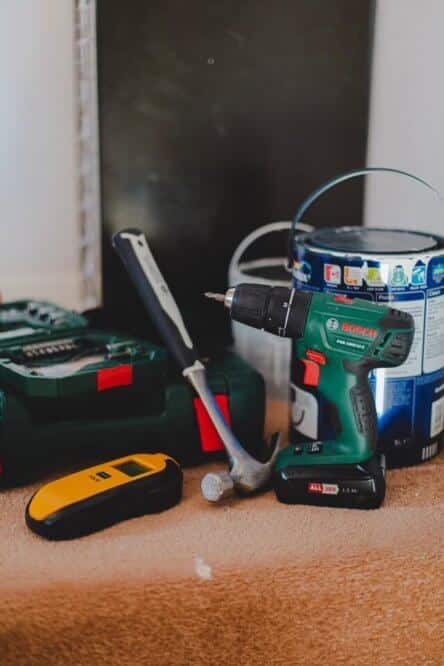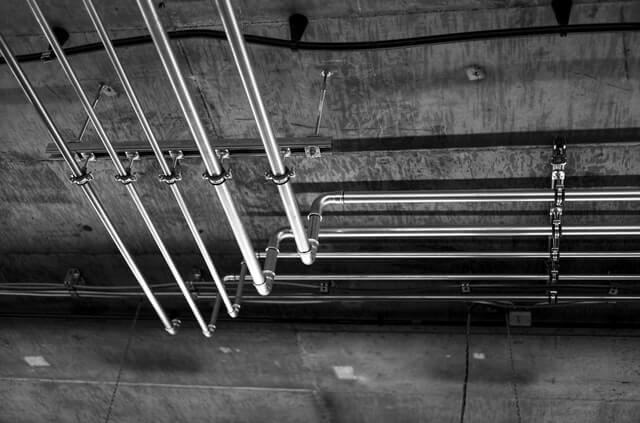There are certain skills that prove to be beneficial for every plumber and householder. Knowing how to unclog plumbing vent without getting on roof is one of them.
Whenever you are dealing with a drain backup, sewer smells, or gurgling noises in your house, it’s important to check the vent pipe.
There are things you can do to unclog the roof vent and ensure the plumbing system in your house is working properly.
In this article, we show you ways to do so.
Plumbing Vents on Roof
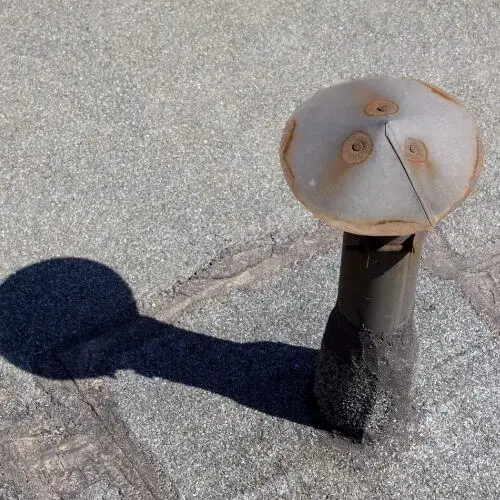
A plumbing vent serves an important role in regulating the air pressure in the plumbing system of your home. Also called a vent stack, it’s an important part of the whole plumbing system.
Every toilet, shower, or other fixture in your house that uses water is connected to a vent stack. That same vent stack extends as a vertical pipe with its end on top being visible on the roof.
Plumbing vents are of crucial importance as they prevent the occurrence of vacuum in your water drainage system. What they are also beneficial for is preventing the sewer gases and foul odor from entering the house.
Not only do these gases smell bad, but there are also health risks that come as a result of being exposed to them. [1]
In addition to removing negative pressure, plumbing vents also provide air into these drainage pipes. This ensures the water moves effortlessly through the plumbing system when each fixture is used.
Should Roof Vent Pipe Be Covered?
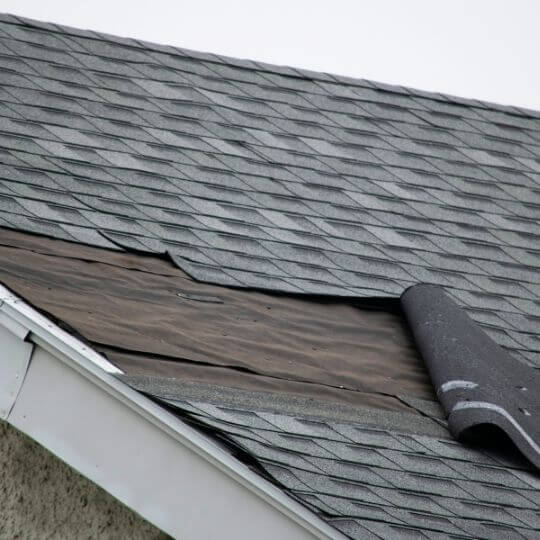
Since plumbing vents end on the roof, their ending is open and exposed to the outside matter. This means that there is always a risk of a plumbing vent getting clogged from everything that gets into it.
This includes dust, leaves, debris, and other similar outside waste. Birds can often create their own nests on the plumbing vent opening, therefore clogging the roof vent.
Most often, a plumbing vent can get clogged during extreme weather conditions such as hurricanes and harsh winters. Strong wind can pile up debris in the vent, and snow or ice can block the vent.
This begs a question – should roof vent pipe be covered?
Actually, if you can avoid it, it’s best to not cover the roof vent.
Its prime purpose is to allow air into the plumbing system. By closing it, you can interfere with its proper function and create more problems along the way.
However, if you live in a climate with difficult weather conditions, the professional plumber may recommend you use a vent boot.
The purpose of vent boots is to cover and prevent water and debris from entering the roof vent. [2] Typically they are made from either rubber or lead. [3]
Rubber ones tend to shift or fall off during extreme temperatures, which can create a leak in your roof. You can prevent this by adding the pipe clamp around the rubber vent boot.
Some other signs of a damaged vent boot include:
- Water seepage through the walls
- Water stains on the ceiling
- Damaged roof around the vent boot
Plumbing Vent Pipe Clogged
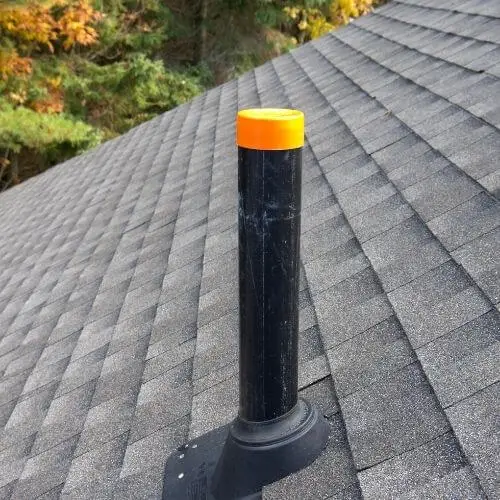
Since there are many possible damages a clogged roof vent can cause, it’s best to resolve this problem right away.
Depending on your particular situation, you may or may not be able to climb on a roof to unclog the vent. Unclogging the vent from the roof can be dangerous, especially during difficult weather.
Luckily, it’s possible to unclog plumbing vent without getting on roof. But before you decide to do so, you first have to be sure that it’s the plumbing vent that is clogged.
Signs Your Plumbing Vent Is Clogged
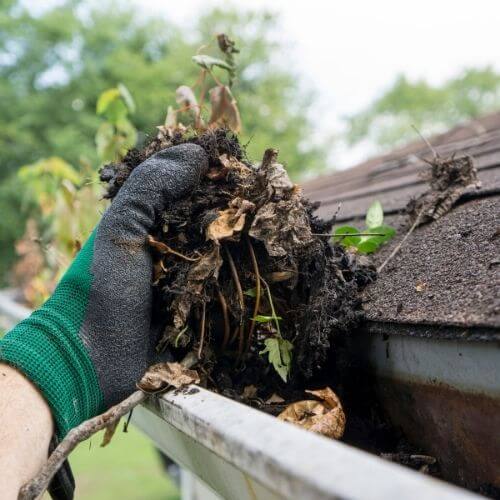
Let’s take a look at some of the telltale signs of a clogged plumbing vent. These signs will help you pinpoint the problem and start resolving it.
- Gurgling Sounds
When the vent is clogged, not enough air can travel to replace the vacuum in pipes. This delay results in gurgling sounds in the pipes. However, this can also be the case of excess air in water pipes.
- Empty Toilet Tanks and P-traps
The reduced air pressure due to a blocked roof vent can result in completely dry drain pipes. When almost no air pressure is created, this can dry out your toilet tank and P-traps from the water completely.
- Slow drainage
When there is no beneficial air in pipes, there is virtually nothing that can push the water through the pipes. This can lead to very slow drainage of the water or even low water pressure.
Slow drainage also means there’s not enough water to flush the waste through the toilet. Eventually, this can lead to a toilet overflow which can be hard to deal with.
- Sewer Smells
Since there will be no water in P-traps, you may notice foul smells around the bathroom, basement, or anywhere else in the house. This is because, without water in the P-trap, sewer smells can easily enter your house. [4]
- Leaky Drains
This is the result of the pressure created in pipes that has no release because the roof vent is blocked. Clogs in drain lines not only result in leaky drains but also in drain backup in the basement.
Ways to Unclog Plumbing Vent Without Getting on Roof
Most of the time, it’s very dangerous, and also unnecessary to climb onto the roof to unclog a plumbing vent. There’s no need to put your safety at risk when there are ways to unclog the vent from inside the house.
The first thing you need to do is to locate the plumbing vent. It’s a PVC pipe, typically found in the attic above the kitchen or bathroom.
The next thing you need to do is to cut the PVC pipe using a hacksaw or a similar tool. Make sure to use gloves and ask someone to assist you in this process.
After you cut the section of the PVC pipe, put the electric drain auger inside the vent. You can also use the drain snake, as both of these tools work to pull the clog out.
Start by going downwards, then move upwards toward the roof if no clog is yet detected.
After you find and break the clog, you’ll need to repair the pipe. For this, you can use rubber or PVC couplings.
Can I Pour Water Down My Vent Pipe?
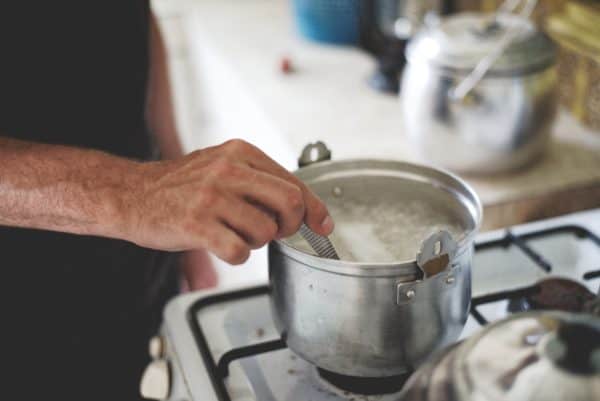
If a clog is not completely removed with the use of a snake, there are still some other ways to unclog a vent.
Pouring water down the vent pipe is possible and is sometimes the best solution to the clogged vent. Water gets inside the plumbing vent every time it rains, so this is a perfectly acceptable thing to do.
However, keep in mind isn’t a way to unclog plumbing vent without getting on roof. You will have to climb on the roof to pour the water down the vent pipe.
Use a garden hose to pour hot water down the plumbing vent. Use full force and point it down to the vent pipe. Wait for a little while, then test the water in your house to see if the clog is resolved.
This should help with any stubborn clogs such as ice or bird nests.
Using Water to Unclog Plumbing Vent Without Getting on Roof
If you still don’t want to climb onto the roof, you can try using water to unclog the vent from your home.
This will work only if the clog is created below the fixtures. You can pour hot water down your toilet or sinks.
For best results, mix the baking soda and vinegar, and pour this solution down the drains.
IMPORTANT NOTE: Adjust the water temperature. Never pour boiling hot water as this can melt the PVC pipes – the mid-level hot temperature is enough.
Cost to Unclog Plumbing Vent
After reading the possible problems of a clogged vent pipe, you may ask – Is a clogged vent pipe dangerous?
Not really, but it can cause some serious water damage in your house. This can cost you a lot, so why not use some of the simple ways to unclog plumbing vent without getting on roof.
Depending on the equipment used and the number of stories of the house, it can cost you anywhere from $100 to $200. [5]
However, the clogged drains, leaky pipes, and water damage this can result in can cost you thousands of dollars in total. [6]
Bottom Line
Now you know that it’s not impossible to unclog plumbing vent without getting on roof. In fact, this can easily be a DIY project that doesn’t require you to phone a professional plumber.
Noticing signs of a blocked plumbing vent is the first step to resolving this problem. If ignored, this clog can result in various different problems with your plumbing, such as leaks, burst pipes, etc.
All you need to unclog a plumbing vent is to know how to use a drain auger or a drain snake.

Michael Davis is a heating & plumbing expert who currently works as independent contractor in SC. He also writes for Plumbertip.
For almost 10 years he worked on various plumbing tasks across South Carolina.
